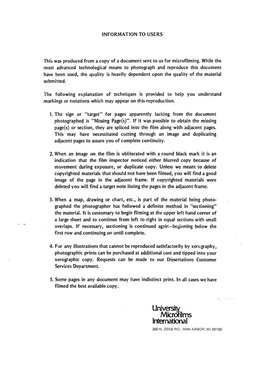| dc.contributor.author | Russell, David Roger, | en_US |
| dc.date.accessioned | 2013-08-16T12:28:23Z | |
| dc.date.available | 2013-08-16T12:28:23Z | |
| dc.date.issued | 1981 | en_US |
| dc.identifier.uri | https://hdl.handle.net/11244/4890 | |
| dc.description.abstract | Spenser uses several techniques to achieve this unity in a poem which contains diverse subjects and themes. Its genre, the hymn, incorporates secular and sacred, classical and Christian elements, and thus becomes a very flexible instrument for decorously expressing a wide range of ideas and emotions within a single structure. Spencer's persona unifies the poem as he undergoes a profound change from young Petrarchan lover to mature Christian devot, a change which reflects Elizabethan ideas of the typical pattern of a man's intellectual and spiritual growth. To represent this change Spenser borrows the conventions of Petrarchan verse and literary Platonism in the "earthly" hymns, and the conventions of the sermon and the popular devotional manuals in the "heavenly" hymns. The two pairs of hymns are further unified in that their structure mirrors the structure of the Elizabethan cosmos; earth below, heaven above, with man operating between these cosmological and theological poles. The repetition of images and topoi links the individual hymns in ways that reflect the Elizabethan concept of the universe as divine order. The hymns also reflect the typical Elizabethan aesthetic theory (best expressed in Sidney's Defence) that poetry has both a mimetic and a didactic function. The two pairs "imitate" what A. S. P. Wodehouse terms the order of nature and the order of grace, the two levels of experience posited by Renaissance thinkers. Moreover, the hymns teach man's proper response to love and beauty, first on a "natural" or ethical level, then on a "celestial" or spiritual level. | en_US |
| dc.description.abstract | Interpretations of Fowre Hymnes have generally focused on Spenser's attitudes toward love and beauty, his religious views, or his debt to Platonism. This study is an attempt to view the poem as a highly unified work of art which reflects the most basic assumptions of Elizabethan culture, the "common knowledge" of Spenser's age, rather than as an exposition of Spencer's specific ethical, religious, or philosophical views. | en_US |
| dc.description.abstract | When viewed as a thoroughly Elizabethan poem, rather than a specifically Platonic one, Fowre Hymnes resembles many of Spenser's more widely studied works in its capacity to include a wide range of human experience within the limits of decorum which his age imposed. | en_US |
| dc.format.extent | iv, 159 leaves ; | en_US |
| dc.subject | Literature, English. | en_US |
| dc.title | The unity of Edmund Spenser's Fowre Hymnes. | en_US |
| dc.type | Thesis | en_US |
| dc.thesis.degree | Ph.D. | en_US |
| dc.thesis.degreeDiscipline | Department of English | en_US |
| dc.note | Source: Dissertation Abstracts International, Volume: 42-07, Section: A, page: 3168. | en_US |
| ou.identifier | (UMI)AAI8129406 | en_US |
| ou.group | College of Arts and Sciences::Department of English | |
